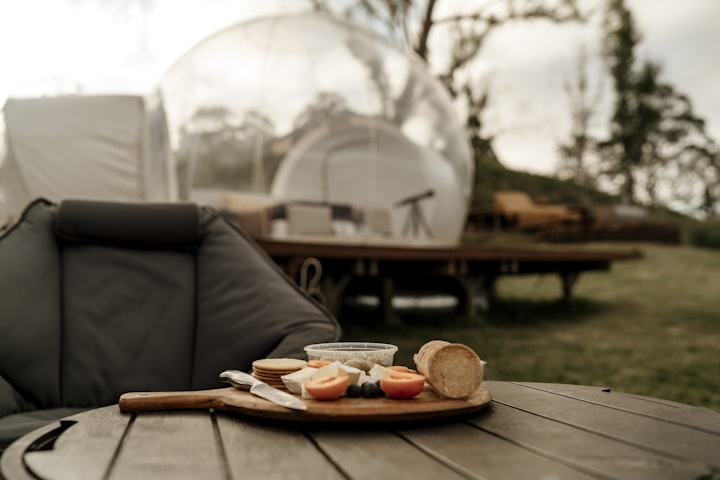Trying Pachamanca for the first time...
Have you ever tried alpaca? It's delicious and a Peruvian delicacy

Peru is well-known for it's rich culture and Incan heritage, soulful music, beautiful landscapes and most impressively; delicious, hearty traditional meals created with love.
My host family and I had fun cooking together on the last day of my short stay in Cusco. They recommended making 'pachamanca'; a traditional dish rich in flavour and passed down from generation to generation. I was excited to taste and learn how to make this amazing dish!
We spent the afternoon harvesting the root vegetables and tending to my host family's alpaca farm. The name of the dish (i.e. 'pachamanca'), stems from two words in the Quechua (i.e. the most widely spoken native language in Peru); 'Pacha' meaning 'Earth', and 'Manca', meaning 'Pot'. Pachamanca is essentially an Andean pit roast; seasonal vegetables and meat are seasoned with an array of spices, placed on hot stones and roasted underground. Pachamanca is usually prepared around harvest time as a thank you offering to 'Pachamama', Mother Earth. It is traditionally a community wide event with each family in the village contributing a portion of their harvest to the dish.
We began by preparing the marinade for the alpaca meat... now I know what you might be thinking, "Oh my goodness! How can you eat alpaca?! What does it even taste like?"
Peruvians have herded and tended alpacas and llamas for centuries; these animals produce delicious dairy products and their wool used to produce beautiful scarves and blankets to help manage the blistering cold sub-zero temperatures at night. Alpaca meat is actually comparable to lamb/goat meat and is delicious, tender and best enjoyed in stews and with roasted vegetables.
So... going back to our pachamanca preparation - we prepared a green marinade for the alpaca meat using huacatay (i.e. cream of black mint leaves), coriander, garlic and fermented Incan corn beer known as, "chicha de jora". A separate red marinade was made for the white meat, where we removed the seeds from three habenero chilli peppers, before blanching them in hot water for around five minutes. Once soft, the peppers were blended to a smooth purée. Vegetable oil, cumin, vinegar, mustard, fresh oregano and garlic were added to the pepper mix used to coat and marniade the chicken.
I helped my 'father' dig and set up a small pit lined with stones and charcoal. We carefully lit this 'make-shift' mini-stove and covered the pit with soil to heat gently for several hours, as the meat marinated.
After five hours the 'oven' was hot and ready to be loaded. We started by placing red potatoes at the bottom of the pit, before covering them with the stones heated for several hours prior. We then placed white and red meat seasoned with red and green marinades on the hot stones situated above the potatoes at the base of the oven. We proceeded to place more hot stones on to the meat before placing foil wrapped bundles of rainbow trout onto the hot stones above the layer of meat. Sliced tomatoes and onions were sprinkled over the 'trout layer', before being covered with more hot stones and whole tubers of plantain and cassava. We added a small clay pot of cheese and rosemary to the roasting pit before covering the pit with hot stones, carefully positioned to seal crevices and lock in steam. The pit was covered with plantain leaves, fava beans and fresh herbs to help season the upper vegetable layers and as an added layer of insulation. Wet cloths were placed above the herb layer and the entire pit submerged in soil to cook slowly.

We spent the next hour laughing and playing with the family dog as the food cooked slowly in the underground oven. I had so much fun tasting fermented Peruvian alcoholic drinks and learning traditional Incan songs and dances. After several rounds of shots and fun, we checked on the pachamanca pit; the key to identifying if the meat and potatoes underground are well-cooked, is to check if the fava beans placed in the uppermost herb layer are soft and ready to eat... and luckily for us, they were!

We began unearthing each layer and serving the potatoes, plantain, pineapple, chicken, alpaca, corn and roasted vegetables in clay dishes, buffet style for the whole family and neighbours to enjoy. The slow cooked alpaca was tender and delicious and was well complemented with the spicy chicken and vegetables.
Making pachamanca is truly a labour of love; it can be difficult shovelling a deep pit and waiting several hours for the meat to marinade and for the oven to heat up (especially when hungry!!), before painstakingly layering each food item with hot volcanic stones... however, the quality and taste of the meat slow-cooked in this fashion is INCREDIBLE!!! I absolutely have to visit Peru again in the near future!
If, however, like me you are craving the taste of pachamanca and you live in an urban environment where creating an underground hot stone oven may not be feasible... it is possible to adapt the cooking process and slow cook the meat and vegetables in a fan assisted oven on low heat/barbeque.
Green and red marinades used to prepare the red and white meat respectively, are available ready made on Amazon/eBay and at local Hispanic food stores/markets or if you're feeling adventurous, there are several recipes online for preparing red/green Peruvian sauces and marinades to take your homemade pachamanca to the next freaking level!
Happy eating and talk sooon!
Emma






Comments
There are no comments for this story
Be the first to respond and start the conversation.